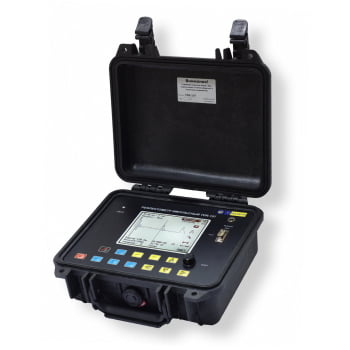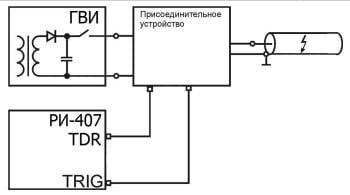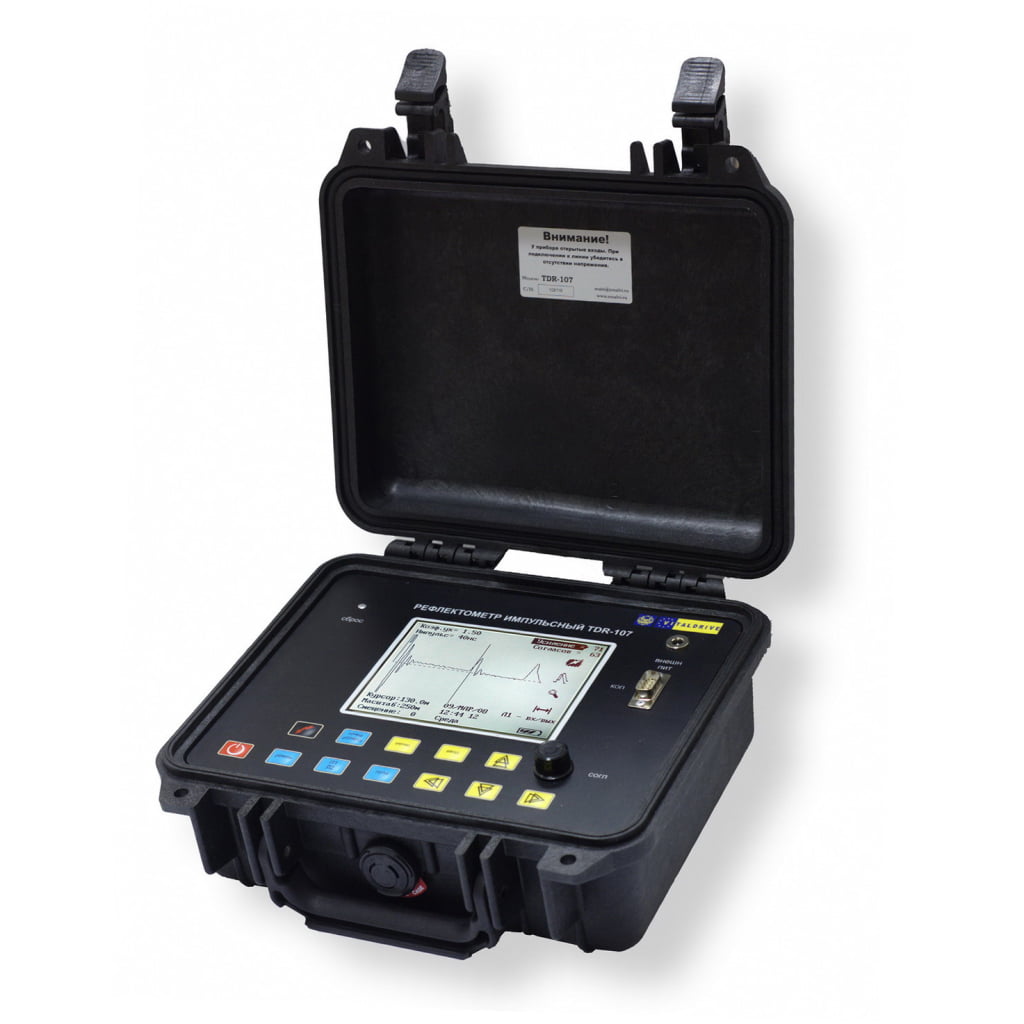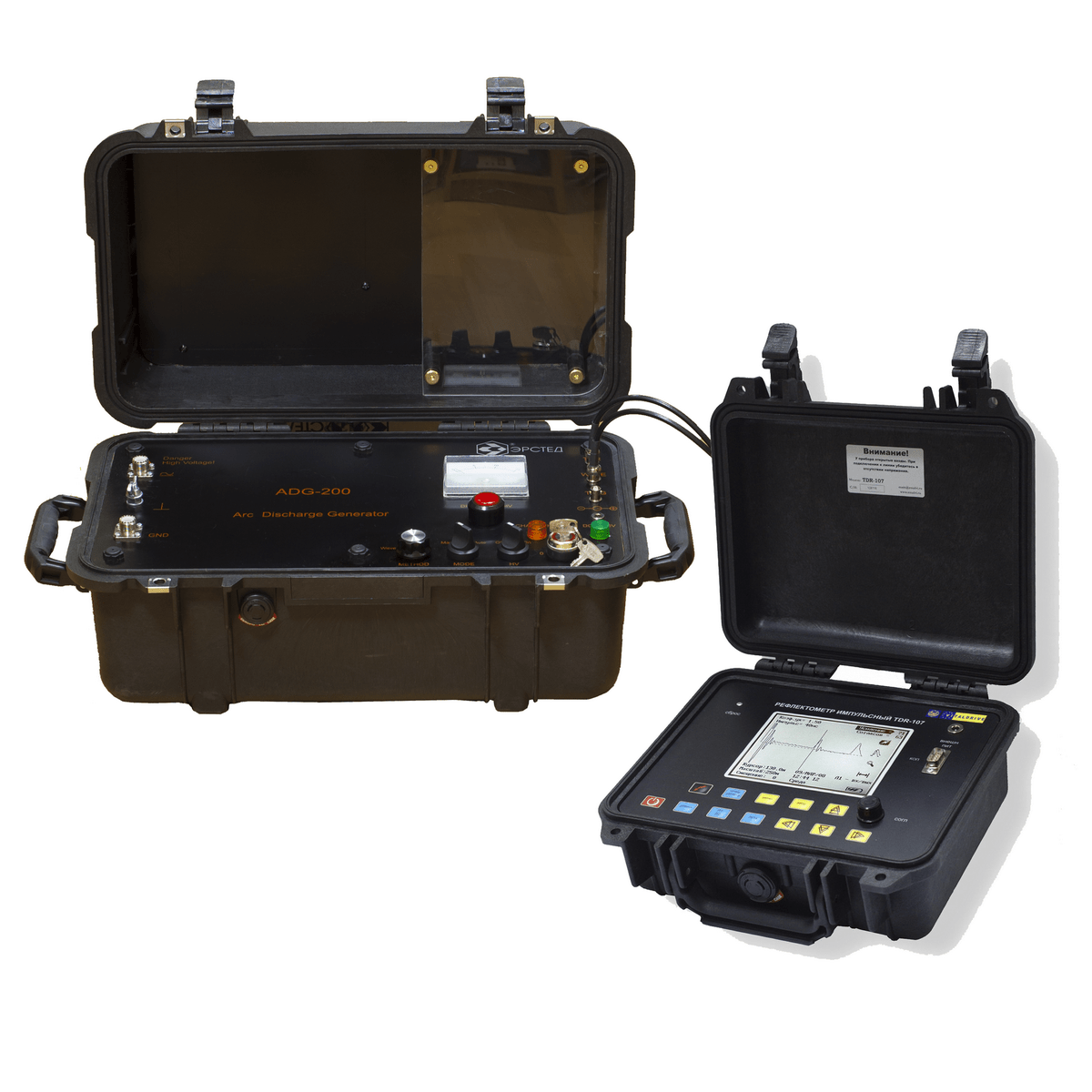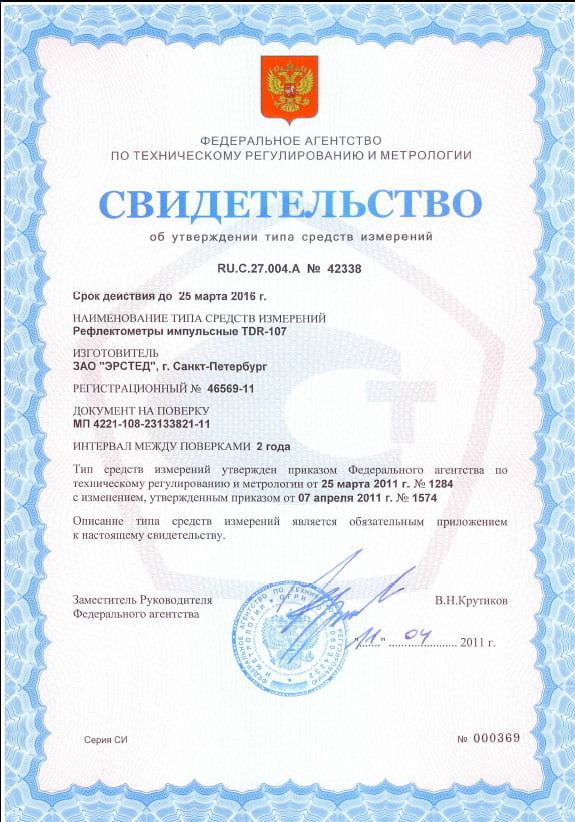TDR-107 cable fault locator is a modern digital reflectometer designed specifically to find and diagnose faults in the power cable lines: open, short, sleeve, cable splice, parallel drainage, wet cable, etc.
It can also be used on any other metal cable lines, communication cables, signaling and control cables, computer networks, television and radio frequency cable lines.
TDR-107 reflectometer can be used for fault location with TDR method (effective for low-resistance defects <1 kOhm), and with Arc-Reflection Method (ARM), (effective for high-resistance faults> 1 kOhm).
Overview
TDR-107 cable fault locator implements the following measurement methods:
- Time Domain Reflectometry (TDR)
- Arc Reflection Method (ARM or SIM )*
* when used in complex with high-voltage pulse generators (HVPG), for example: ADG-200-2 “STINGRAY-M”
Time Domain Reflectometry (TDR)
the most accurate and safe mode – effective for diagnosing low-resistance faults (less than 1 kOhm) and short circuits, searching for cable line breaks, joints/splices, parallel branches, etc.
More about this method:
Time Domain Reflectometry (TDR). Theoretical basis.
Time Domain Reflectometry (TDR). Practical techniques.
The method allows you to perform the following works:
• cable length measurement;
• measurement of distances to impedance inhomogeneities or faults;
• measurement VoP (v/2) of the line at its known length;
• determination of the nature of cable fault.
The TDR method is based on the phenomenon of partial reflection of electromagnetic waves in places where the impedance of a line changes. When measuring by the TDR method, a short voltage probe pulse is sent to the line, which, partially reflected from the impedance inhomogeneities, returns back. The reflected pulses return to the TDR-device some time after the sending of the probe pulse. Knowing the signal velocity of propagation in the line and the delay time of the reflected signal, it is possible to calculate the distance to the impedance inhomogeneity (fault). Reflections from the probe pulse are observed on a range-scaled screen, and by their form can be determined the nature of inhomogeneity.
Inhomogeneities of the impedance are the result of a violation of the cable production technology, as well as a consequence of mechanical and electrical damage during the construction and operation of the cable. Inhomogeneity also occurs in the points where any devices are connected to the cable line (coupling, branch, cable splice/joint, Pupin coil, etc.), or in points of faults (open circuit, short circuit, wetting of the cable core, leakage to earth, leakage to an adjacent wire, broken pairs, etc.). The TDR method makes it possible to see multiple inhomogeneities, both discrete and distributed, depending on the ratio of their length and the minimum wavelength of the probe pulse spectrum.
Arc Reflection Method (ARM)
in combination with a High-Voltage Pulse Generator (HVPG), for example ADG-200-2 “STINGRAY-M”, allows to detect High-Resistance faults (> 1 kOhm) with the accuracy of the TDR method.
You can read more about this method at the link:
Arc Reflection Method (ARM) for high-resistance faults prelocation
Localization of high-resistance faults at the site of a defect is usually difficult when using a low-voltage pulse measurement method. One of the ways to localize such defects on power cables is the Arc Reflection Method (ARM).
The essence of the ARM method is that a short-term electric arc is created (with the help of High-Voltage Pulse Generator ) at the place of cable damage. A burning electric arc has a low resistance, so it is well detected by an TDR.
The method does not require preliminary burning of the insulation and is especially effective when working on cables with a polyethylene sheath.
TDR-107 cable fault locator Specifications
| Measurement Modes |
|
| Monochrome LCD display | 5.7″ (320×240 pixels) |
| Range measuring distance (delay time) | from 0 to 50000 m (0 to 500 ms) |
| Sub-bands of distance (time delay) | 0 – 250 m (0 – 2.5 ms), 0 – 500 m (0 -5 ms), 0 – 1000 m (0 – 10 ms), 0 – 2500 m (0 – 25 ms), 0 – 5000 m (0 – 50 ms) 0 – 12500 m (0 – 125 ms), 0 – 25000 m (0 – 250 ms), 0 – 50000 m (0 – 500 ms) |
| Distance instrumental error | from 0.04% to 0.4% depending on subband measurements(From 1 m to 20 m, depending on the measurements subband VOP = 1.50) |
| The effective sampling rate | 100 MHz |
| Range concerted resistance | from 25 ohms to 600 ohms |
| Probe pulse duration | from 10 ns to 100 ms |
| The amplitude of the probe pulse | 10 a matched load |
| The sensitivity of the receiving path | better than 1 mV |
| The dynamic range | not less 80 dB |
| The setting range of the velocity factor | VOP = 33.3% … 99.9% (step 0.1%) |
| Time delay adjustment range (pulse-arc method) | from 0 to 4 ms (step 0.2 ms) |
| Synchronization (pulse-arc method) |
|
| Continuous battery operating time | at least 8 hours |
| Time of continuous operating time through the charger | unlimited |
| Dimensions | 70x246x124 mm |
| Operating temperature range | from -20 °C to +40 °C |
| Weight with a battery | not more than 2.5 kg |
Features
- ability to apply two basic modern methods of diagnosis and fault location of cable lines: pulse method and pulse-arc method;
- real time measuring;
- asynchronous interference suppression;
- 5.7 ” display with a resolution of 320×240 pixels;
- non-volatile memory for 100 traces with the digitization of all measurement parameters;
- pointwise subtraction mode to show only differences;
- maximum range – 50 km;
- compare mode with a trace from the device memory;
- preview mode waveforms with text notes from memory;
- built-in table velocity factor of 200 values, with the possibility of replenishment;
- PC data exchange;
- splash proof hermetical body with high mechanical strength (protection class IP67);
TDR-107 cable fault locator Delivery contents
Delivery contents | |
| Cable Fault Locator TDR-107 | 1 pc. |
| Power adapter DC 12V | 1 pc. |
| Connection cable 75 Ohm, 1 m, BNC.M – «crocodile» clips | 1 pc. |
| Connection cable 75 Ohm, 1 m, BNC.M-BNC.M | 2 pcs. |
| User Manual TDR-107 | 1 pc. |
| CD with software and documentation | 1 pc. |
| Accessory bag | 1 pc. |
| PC connection COM-cable | 1 pc. |
Additional equipment |
| Arc Discharge Generator ADG-200-2 (10 kV, 200 J, 17kg) |
| Voltage protection unit UP-1 for operation on cables under voltage up to 380 V; |
| Extension cable 5 m, 75 Ohm, BNC.M-BNC.F |
| Connecting cable 1.5 m, 75 Ohm, BNC.M-crocodiles 25.4 mm |
| Connecting cable 0.1 m, 75 Ohm, & nbsp; BNC.M-crocodiles |
| Adapter BNC.M – terminals |
| USB-Flash drive |

